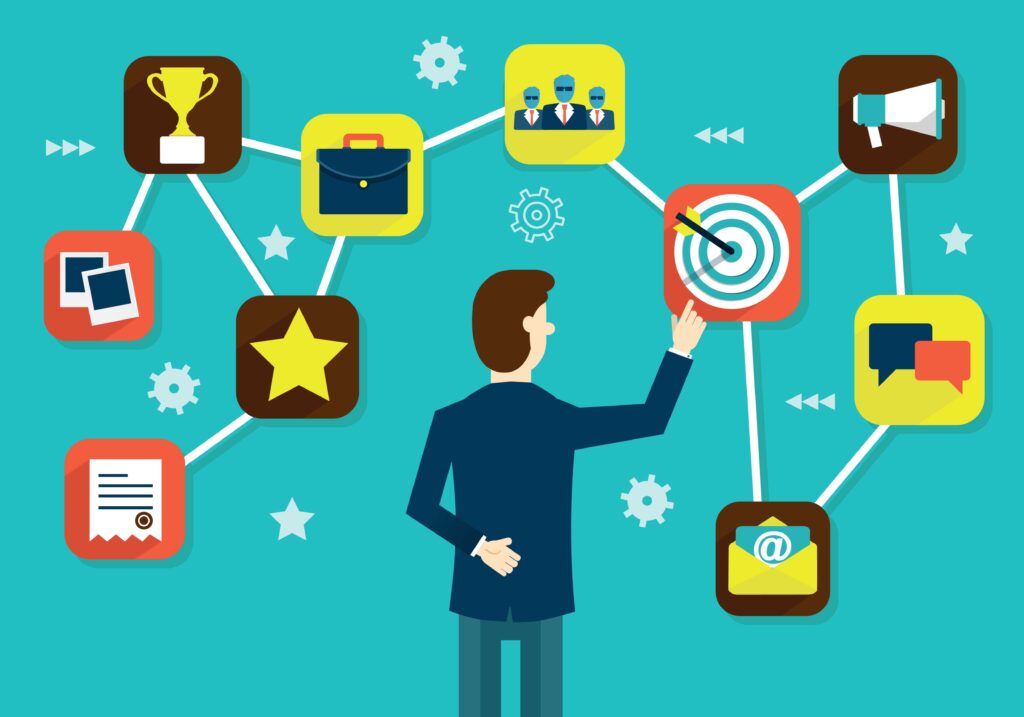Sales funnels aim to establish customers’ journey from becoming familiar with your product and services to sales. However, to make your sales funnel genuinely work, you must understand how each stage performs and how you can enhance it.
To measure the performance of each stage in the funnel, you need clear metrics for each of them. By analyzing these metrics and finding gaps in the performance, you can find ways to enhance your sales funnel and increase your leads.
In this blog, we will learn how to set up metrics for sales funnels and analyze them to drive success. So, if you are eager to learn with us, let’s start.
Why Are Sales Funnel Metrics Important
Sales funnel metrics show how well your sales process works and help you understand how effective your sales activities are. They also provide advantages such as:
- They visualize the movement of potential leads from the first introduction to sales.
- They help you identify the stages in your sales funnel where you have increased conversion and when people drop off.
- Sales funnel metrics will help you understand the stages where you are missing opportunities for growth.

Without sales funnel KPIs, it will be tough to see what your weaknesses and strengths are and how to work to improve them. It will be like riding in the dark without a clear direction.
What Sales Funnel Metrics to Establish
So, one of the first metrics to establish for the sales funnel is conversion rates.
Conversion rate is an essential metric that shows the percentage of leads that convert to sales after they move through your sales funnel. It is key to understanding how well your sales team is working and succeeding in turning prospects into customers who are ready to purchase your goods.
To calculate the conversion rate, you will need a simple mathematical formula. First, divide the total number of conversions by the complete number of leads and multiply by 100.
The formula will look like this:
Conversion rate=(Number of conversions/Total number of leads)×100
As you can see, the formula is quite easy to use. Plus, you can use it for the different stages of your sales funnel development.

1. Sales
After identifying the number of leads you have by calculating the conversion rate, it is important to determine which portion of them goes to sales.
Counting sales funnel metrics in your analysis provides a clear image of the drivers behind your sales outcomes. The important metrics that you will need to count are the following.
- The number of meetings taken and current sales versus forecasts: Another essential metric can be how long it takes prospects to go through each stage in the sales funnel. For example, a delay in moving from lead to customer may indicate the need to re-strategize on better ways of nurturing leads.
- Count lead scoring: Lead scoring is a way of rating interest levels by assigning numerical values. For instance, being added to a newsletter might be worth 10 points; following them on social media could earn an additional 5 points, while attending a webinar adds up to 20 more. The more engaged it gets, the higher the scores.
Lead scoring will help the sales and marketing teams decide when to pass a lead on to a sales representative. It also shows the effectiveness of campaigns. For example, if scores from a particular campaign are always low, that could indicate that something needs to change to better appeal to that audience.
2. Costs
Understanding costs helps identify the ROI( return on investment) from various marketing efforts and how well you are spending the budget you have.
Companies can find out which channel or strategy gives them a better return by looking at metrics such as cost per lead or cost of customer acquisition. The idea is to concentrate resources on high-value prospects while directing others through less expensive channels to optimize efficiency.
3. Entrances
Entrance metrics show the quantity of leads that come into the funnel, where they came from, and why they’ve entered. What constitutes an “entrance” depends on the type of business.
For a retail store, it might be loyalty card sign-ups; for a B2B company, it could be report downloads. The reason for monitoring entrances is to know how well a business should allocate its marketing resources.
If the number of entrances falls, this could suggest that more marketing is needed. Conversely, if the funnel is full but sales are not changing, other metrics, such as lead quality or conversion rates, should be considered.
It also means that you will need eye-catching pages for your store. To get the best design for your store, consider using the help of Funnelish development and having custom-made pages designed for you.
4. Brand Awareness
Brand awareness is a preliminary step in the customer journey. Without it, even the best sales or marketing strategies will fall flat. Metrics to track here include branded traffic, the frequency of searches for your brand name, and brand mentions. These can be tracked using tools such as

Google Alerts or search marketing platforms. More often than not, effective initiatives, such as PR campaigns or paid advertising, will drive increased brand awareness. For instance, an effective PR strategy might increase mentions of your brand, indicating a greater presence in the market.
You can also use the help of professionals to manage your SEM marketing and drive. They can handle generating the content and connecting paid ads so that they will align with your overall sales strategy.
5. Brand Consideration
Once aware of your brand, potential customers consider your brand, which is a step referred to as brand consideration. Many of the same metrics for brand awareness apply but are focused.
Customers will consider criteria such as the quality of the product or service, unique features, and benefits, competitive pricing, or how green the solution is. Customer experience in this step can be directly measured via user feedback, web usability testing, and customer service experience.
For customer experience, it is crucial to have great design so that they will be satisfied with your website. You may use Funnelish to ensure you have a great design matching your brand and product.
Gleaned insight can shape subsequent marketing communications. For instance, if your brand is perceived as expensive, the campaigns can emphasize the value and benefits of your products. If customers value sustainability, highlighting eco-friendly practices can strengthen their consideration.
6. Brand Loyalty
Brand loyalty extends beyond the purchase stage and refers to long-term customer relationships. Key indicators include:
Net Promoter Scores (NPS): This measures the likelihood of customers recommending your brand on a scale of 1-10.
Retention Rate: The number of customers who repeatedly purchase a product over a certain period.
Customer Lifetime Value (CLV): The total revenue generated by a customer over their relationship with your brand.

Low brand loyalty signals fewer returning customers, impeding the performance of funnels. Retaining customers is often less expensive than acquiring new ones, making it important to take immediate action on any loyalty issues. For example, a low NPS might call for an investigation into customer dissatisfaction and strategies that will help increase satisfaction and loyalty.
Conclusion
Measuring the effectiveness of your sales funnel with matrics will help you understand how to work on your funnel to maximize return on investment. To ensure you have calculated everything the right way, consider the conversion rate, lead scoring, sales, brand loyalty, brand awareness, etc.
In this way, you will ensure you can track the areas to work on to drive more conversion. You can also trust the experts in your Funnelish development to get even more conversions with their professional insights and help.